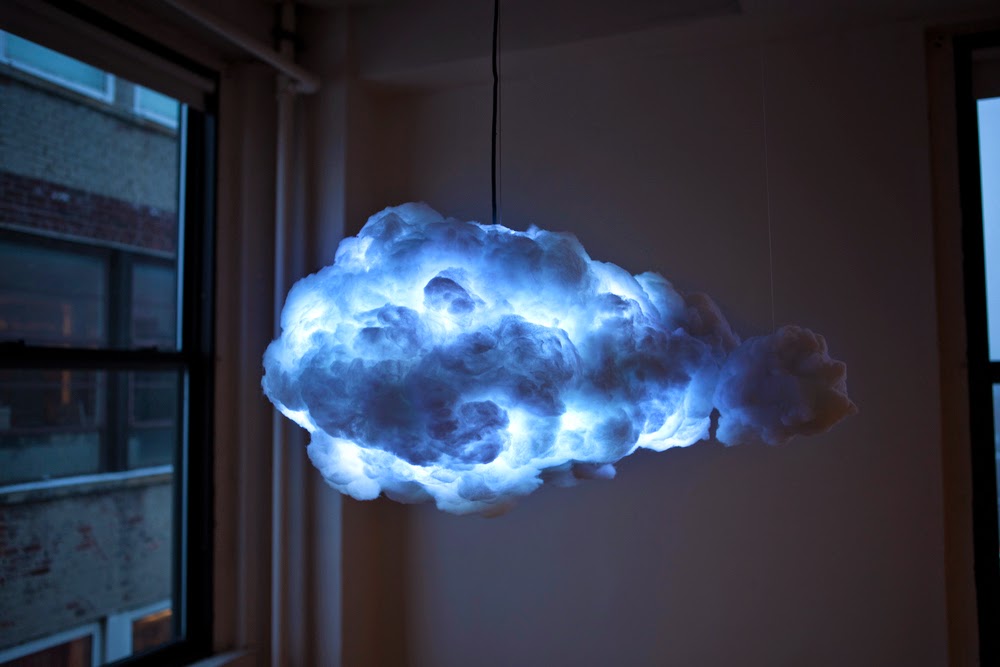And now for something completely different…

Perfect scenario: unorthodox bits of sky-inspired audio played back
on Richard Clarkson’s interactive lamp and speaker, also called The Cloud!
“The Cloud”, Online Image, 1 August 2014, Cloud + R.C.
< http://static.squarespace.com/static/
51b52c1ee4b0f0ee887cd1e8/t/5307897be4b05512e6e91a6f/1393002885630/4.jpg?format=1000w >
“[Cloud Piano] plays the keys of a piano based on the movements and shapes of the clouds. A camera pointed at the sky captures video of the clouds. Custom software uses the video of the clouds in real-time to articulate a robotic device that presses the corresponding keys on the piano. The system is set in motion to function as if the clouds are pressing the keys on the piano as they move across the sky and change shape. The resulting sound is generated from the unique key patterns created by ethereal forms that build, sweep, fluctuate and dissipate in the sky.”
NASA’s Space Sounds, on the other hand, utilize no conventional instruments for a trickle-down musical representation. Rather, the the various probes responsible for recording and converting electromagnetic waves in space, around planets and so on, over to frequencies audible to humans, conveys a much more literal and direct display of what a non-sonic occurrence leaves in human ears if it becomes discernible within 20Hz-20kHz. The coincidentally ethereal and tonically-uneasy results of these wave conversions almost makes it feel as though a cosmic joke is being played on the human race. Perhaps these clips could become the standard for background sound in space exploration films, much akin to the Wilhelm Scream continuously applied to films since 1951 but with far more realism, given their actually real interpretation.
While the answer to each question, provided in the form of these clips, might seem like a frivolous, non-necessity to functional living, seeing more and more exploration into the understanding, conversion and (occasional) artistic programming of these types of unconventional auditory avenues via non-music related projects, ushers in new, much needed, room for musical evolution. It’s no secret that every note has been played. Every lick, riff and hook has been done. Avant-garde is even getting to be a difficult label to genuinely take on, as the absence of more and more expected approaches to music leaves only the uncommon to expose, and, eventually, there will only be less first-time newness to that sector as well.
NASA might not take up music in-between working to expand space exploration technologies but what these two endeavors have in common is a new, yet straightforward, look at two sources for musical inspiration, from things we have long had around us but have maybe taken for granted, in lieu of trying to intensely and or consciously to “do or be different” only in ways we perceive to be relevant for music.

Leave a Reply